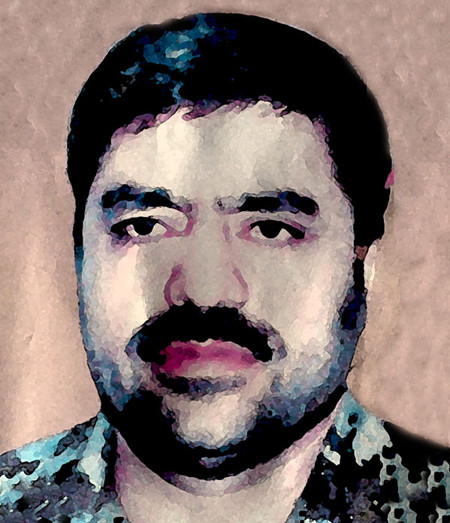The Washington Post, January 19, 2012
Afghan pilot said he wanted to ‘kill Americans,’ probe of Kabul shootings finds
Many praised him as a martyr
By Craig Whitlock

More than 5000 people attended Gul Ahmad's funeral. (Photo: RAWA)
The attack erupted in one of the best-protected parts of Afghanistan: the military-controlled portion of the Kabul airport. As two dozen people gathered for a routine morning meeting in a conference room, an overweight and aging Afghan helicopter pilot pulled a pistol out of his flight suit and began shooting U.S. Air Force officers in the backs of their heads.
On Tuesday, after an intensive eight-month investigation, the U.S. Air Force concluded that the shooter, Col. Ahmed Gul, 46, had acted alone in killing eight members of the U.S. Air Force and one American contractor before killing himself. The probe found no evidence that the attack was part of a Taliban conspiracy.
But the 436-page report by the Air Force Office of Special Investigations also found that Gul had become increasingly radicalized in recent years, had attended an extremist mosque in Pakistan and told relatives that he wanted to “kill Americans.” Some Afghan military leaders told U.S. investigators that they were alarmed by his changed views and attitude, yet there was no sign that they did anything to intervene.
The April 27 rampage was the deadliest attack on U.S. Air Force personnel since 1996, when a truck bomb blew up the Khobar Towers housing complex in Saudi Arabia, killing 19 U.S service members.
Most of those who died in the Kabul attack were assigned to training the fledgling Afghan Air Force, and their deaths fanned fears that insurgents had once again infiltrated the ranks of the Afghan military.
The incident underscored the risks and fragility of the Obama administration’s strategy to train and expand Afghan security forces loyal to President Hamid Karzai so they can fill the void left by departing U.S. and NATO troops. While Afghan officials are supposed to screen recruits and have beefed up counterintelligence programs to detect Taliban sympathizers, acts of betrayal have undermined trust between Afghan forces and their coalition trainers.
Although two Afghan service members were shot and three others injured in the Kabul melee, the Air Force investigation makes it clear that Gul singled out U.S. officers who had mentored their Afghan colleagues and shouted warnings to his countrymen to save themselves. No Afghans died in the attack.
“Good Muslims — please stay away!” Gul shouted from a window of the Air Command and Control Center at the Kabul Airport as Afghan security forces rushed to the scene of the gunshots. “Muslims, don’t come close or you will be killed!”
Gul paused at one point during the shooting and dipped his fingers in blood, the investigation found. Along a hallway, he scrawled “Allah is one” on a wall in Dari, a Persian dialect widely spoken in Afghanistan. On the opposite wall, he painted the words, “Allah in your name.”
He then walked up a flight of stairs, sat on a couch and fatally shot himself in the chest.
Investigators said that Gul killed seven U.S. Air Force officers: Maj. Philip D. Ambard, Maj. Jeffrey O. Ausborn, Maj. David L. Brodeur, Lt. Col. Frank D. Bryant Jr., Maj. Raymond G. Estelle II, Capt. Nathan J. Nylander and Maj. Charles A. Ransom.
Also killed were a non-commissioned officer, Master Sgt. Tara R. Brown, and a private contractor, James McLaughlin Jr., a retired Army lieutenant colonel.
The Americans were armed, but few returned fire, the investigation found. The report said that they had been taken completely by surprise.
In the days after the shooting, U.S. and Afghan officials said that Gul had financial problems, but they struggled to find a motive.
Gul’s brother Hassan Sahibi, a surgeon, also was at a loss. “He never hated foreigners,” Sahibi told The Washington Post in April. “He always served his country.”
U.S. Air Force investigators later uncovered disturbing hints about Gul’s loyalties and state of mind.
One of Gul’s relatives, who was not identified in the redacted report, told investigators that the pilot loved to drink and party when he joined the Afghan Air Force in the early 1980s. But when the Taliban took power a decade later, he became increasingly religious, grew a beard and became a mosque regular.
In 2006, saying he was upset because “foreigners had invaded his country,” Gul moved to Hayatabad, Pakistan, just outside the frontier city of Peshawar, where he lived in housing provided by the Pakistani military, according to the relative.
After 18 months, he returned to Kabul to rejoin the Afghan Air Force. When family members asked him why he was going back, he replied that he wanted “to kill Americans,” according to the relative interviewed by U.S. investigators. The relative said no one in the family took Gul seriously.
In Kabul, Gul was assigned to manage passenger and cargo operations for the Afghan Air Force, but he rarely showed up for work on time and displayed a sour personality, colleagues told U.S. investigators.
An Afghan Air Force colonel who had known Gul for more than 20 years described him as “irresponsible, stubborn and insistent.” He said Gul had become much more religious, attended a mosque headed by an anti-American imam and that his “views were boiling over and extreme to an extent.”
The unidentified Afghan colonel also said he was surprised that Gul was quickly issued a 9mm pistol just four months after reporting for duty in Kabul, which was “not normal.” The colonel speculated that Gul must have had “top cover” from a high-ranking officer in the Ministry of Defense, although he did not specify anyone, according to the report.
Although U.S. and Afghan investigators found no evidence that Gul had a direct connection to the Taliban, his suicide mission did not lack for public sympathy.
According to the investigation and news reports, about 1,500 Afghans turned out for his funeral. Many praised him as a martyr.
Characters Count: 6945
